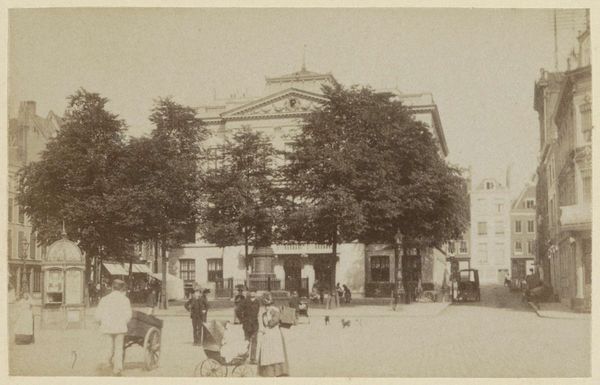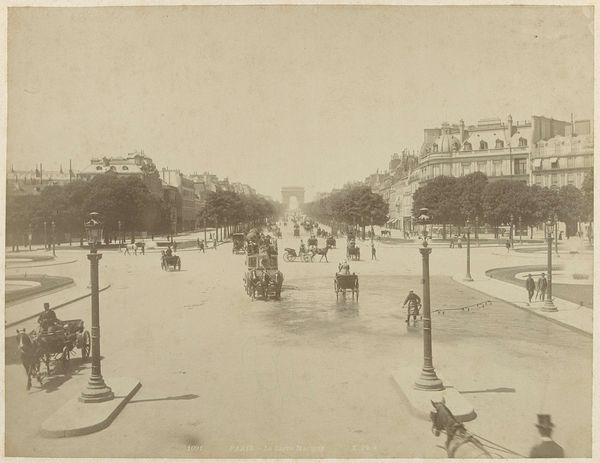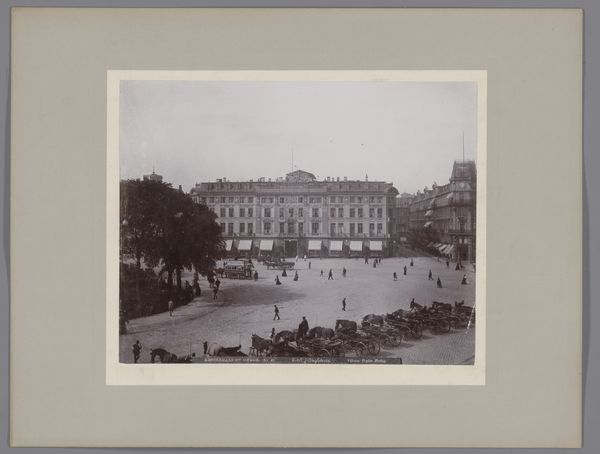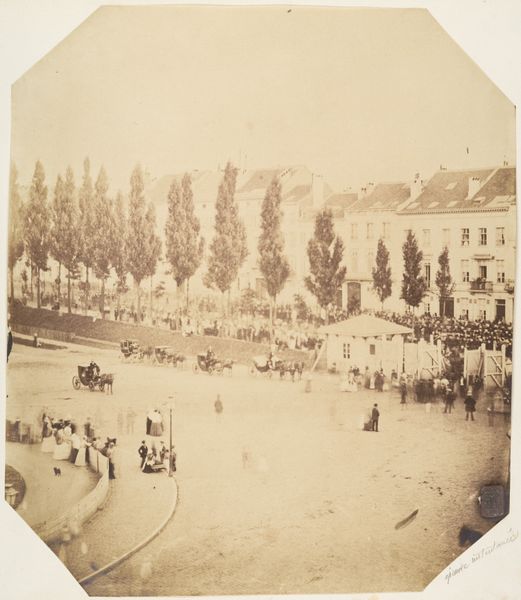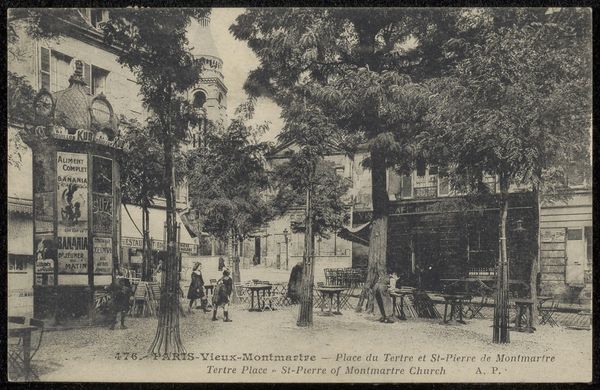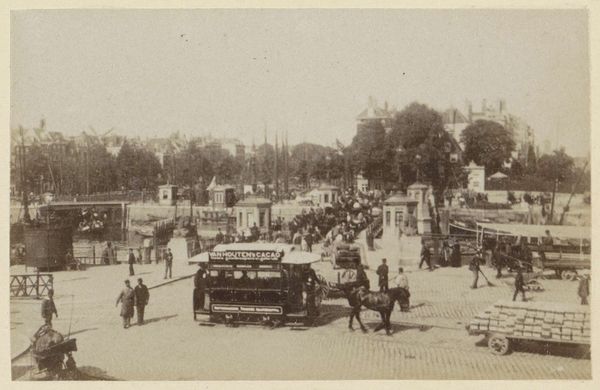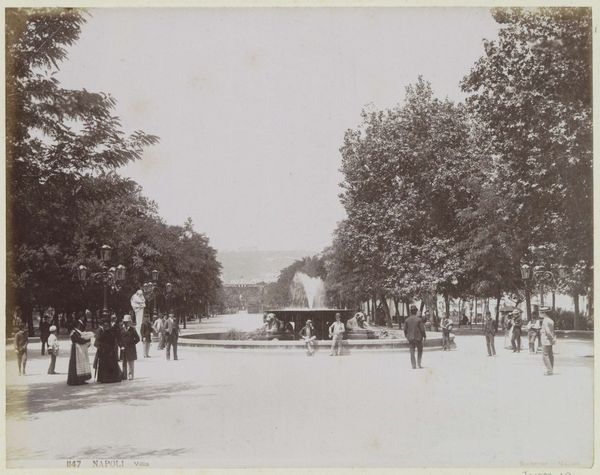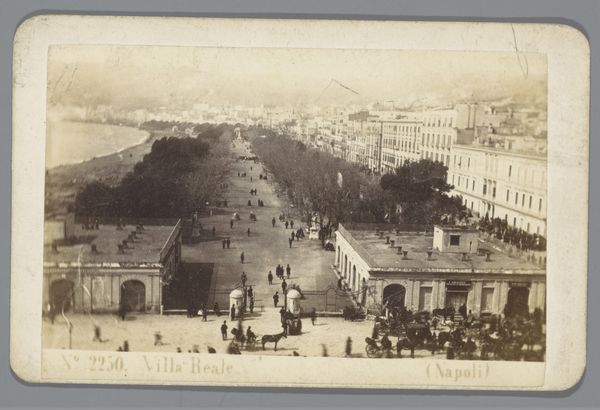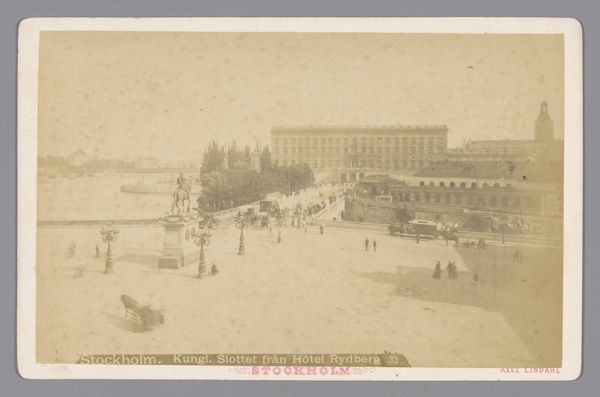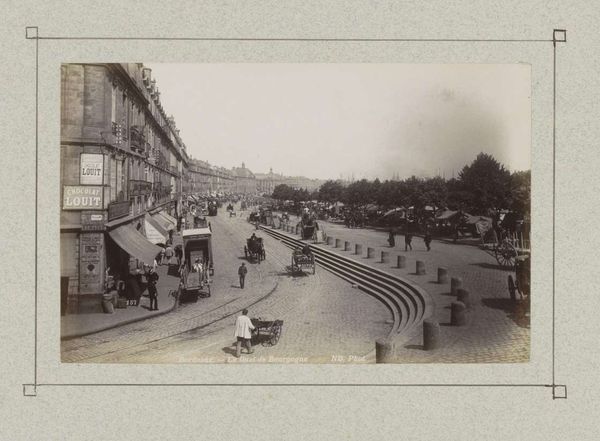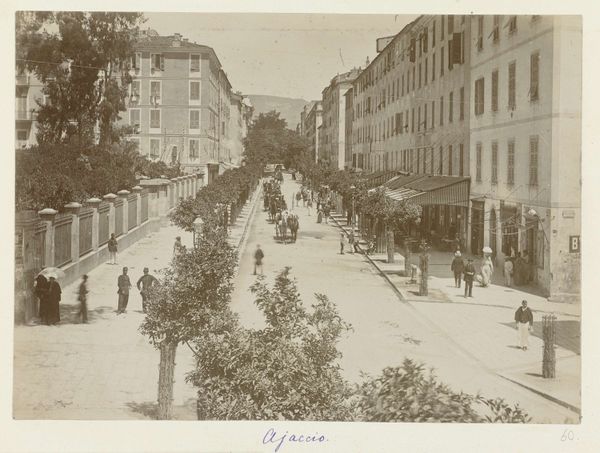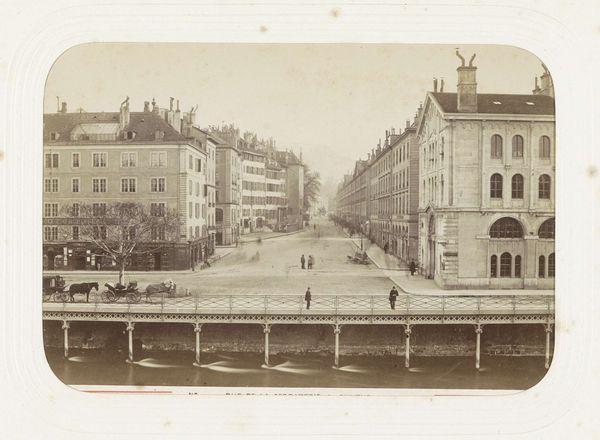
print, photography
#
pictorialism
# print
#
photography
#
cityscape
#
genre-painting
#
realism
Dimensions: height 203 mm, width 257 mm, height 309 mm, width 507 mm
Copyright: Rijks Museum: Open Domain
Editor: This is Giuseppe Incorpora's "N.15 Palermo, Piazza Marina," taken sometime between 1893 and 1903. It's a photographic print depicting a bustling city square. I'm immediately struck by the muted tones and the way the light seems to soften the scene, almost like a memory. What do you see in this piece? Curator: Beyond the aesthetic charm, I see a powerful document of urban life at the turn of the century. Consider the context: Italy was undergoing significant social and political shifts. Photography, still relatively new, was becoming a tool for both documenting and shaping perceptions of this changing society. Who is visible in the photograph and how are they arranged? Editor: I notice people from different walks of life. There are vendors in the foreground, what look like bourgeois families strolling, and even a horse-drawn carriage and a tram. It feels very… candid. Curator: Precisely. Incorpora captured a seemingly ordinary moment, but through our contemporary lens, it reveals so much about the social hierarchy and the burgeoning modernization of Palermo. The composition guides our gaze. The separation of foreground, middle ground, and background. Where do our eyes settle, and what does that tell us about the intended focus? Editor: My eye keeps going to the building on the left. It dominates that part of the square. It gives me a sense of permanence. Curator: Does it invite further contemplation about power structures within the urban landscape and their visibility in public spaces? Considering the rise of industrialization, could this photograph also reflect evolving class relations? Editor: That's a fascinating perspective. I hadn't considered how this image captured a specific moment of social and economic transition. I see it now, a picture of change. Curator: It underscores the vital role art, especially photography, plays in chronicling the transformations occurring within communities, reflecting those identities and intersectional narratives, as cities evolved during critical junctures in history.
Comments
No comments
Be the first to comment and join the conversation on the ultimate creative platform.

